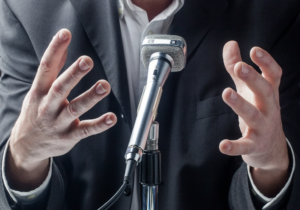Ads
Body language is an essential tool in business and social communication. It allows you to convey respect, attention, and enthusiasm without using words. Body language is something that most people use unconsciously, but by understanding and mastering it, you can improve your social skills and interactions. In this article, we will discuss the importance of body language in the workplace, and provide some tips and answers to common questions.
Defining body language
Body language is a form of communication that is primarily used in face-to-face interactions. It involves the use of movements, postures, gestures, and other physical cues to convey messages and emotions. Body language is often used in conjunction with verbal communication, and can enhance or reinforce the message being conveyed. Posture, hand movements, eye contact, facial expressions, and even handshakes are all examples of body language.
Workplace body language guide
Effective communication is essential in the workplace, and mastering body language can help you improve your interpersonal skills and interactions with colleagues. Here are some tips to help you enhance your workplace body language:
1. Firmly shake hands: A firm handshake is often the first step in building a new relationship. It signals your interest in engaging with the other person and shows respect. Make sure to shake hands firmly and confidently, as a weak handshake may give off the wrong impression.
2. Smile: Smiling is a simple yet powerful way to communicate warmth and positivity. A smile when meeting someone or during a conversation shows that you are happy to be there and engaged in the interaction. Remember to smile genuinely and appropriately, as excessive smiling may come across as insincere.
3. Eye contact: Making eye contact is a crucial aspect of effective communication. It shows that you are present, attentive, and interested in the conversation. Maintain eye contact while speaking or listening to show that you are engaged and respectful.
4. Nod your head: Nodding your head while listening is a non-verbal way to show that you are attentive and understanding the other person’s points. It can also signal agreement or approval.
5. Use hand gestures: Hand gestures can enhance your verbal communication and make your message more engaging. Be mindful of the gestures you use, as they can convey different meanings. Open gestures can signal openness and honesty, while closed gestures may indicate defensiveness or discomfort.
6. Pay attention to posture: Your posture can communicate a lot about your confidence, engagement, and interest in a conversation. Sit or stand up straight to show that you are attentive and respectful. Avoid slouching or crossing your arms, as these gestures may be perceived as disinterest or defensiveness.
7. Manage subtle movements: Small movements and gestures are natural during conversations, but excessive movements can be distracting. Be mindful of fidgeting, tapping, or other nervous habits that may detract from your message.
Frequently asked questions about body language
1. Can you overdo body language?
Yes, using excessive body language can be distracting and may detract from your message. Your body language should complement your verbal communication, not overshadow it.
2. Does individuality affect body language?
Yes, your relationship with the person you are interacting with can impact your body language. You may use more casual body language with a coworker or friend, while maintaining a more formal and respectful posture with a supervisor or client.
3. Do cultures have different body language?
Yes, different cultures have unique interpretations of body language. Gestures, facial expressions, and other nonverbal cues may vary across cultures. It is important to be aware of cultural differences when communicating with individuals from diverse backgrounds.
In conclusion, mastering body language can help you improve your communication skills and enhance your interactions in the workplace. By paying attention to your gestures, expressions, and posture, you can convey respect, attentiveness, and professionalism in your interactions. Remember to practice these tips and be mindful of cultural differences to communicate effectively with others.






